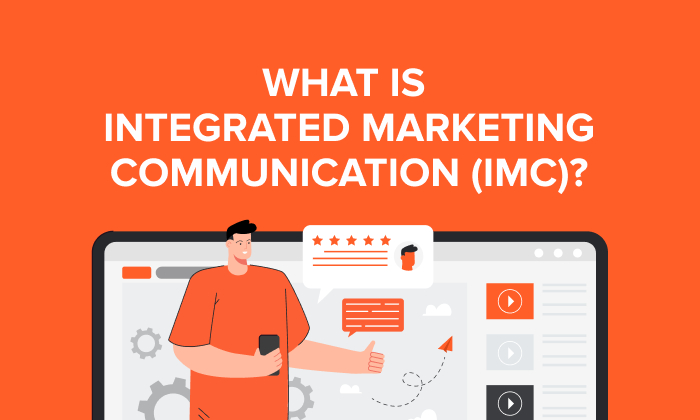
In today’s fast-paced digital landscape, standing out is more crucial than ever. Businesses no longer compete on products or services; they’re vying for attention in a crowded marketplace. Enter Integrated Marketing Communications (IMC) — the strategic approach that harmonizes various marketing channels to create a cohesive message and brand identity.
Imagine a symphony where every instrument plays its part perfectly, creating an unforgettable experience for the audience. That’s what IMC does for your business. You can effectively capture your target audience’s heart and mind by blending advertising, public relations, sales promotions, and more into one unified strategy.
Whether you’re a startup looking to make waves or an established company aiming to refresh your approach, understanding IMC could be the key to unlocking substantial growth and engagement. Ready to dive deeper? Let’s explore how this powerful strategy has evolved and why it’s essential in modern business practices!
The Evolution of IMC and its Importance in Modern Business
Integrated Marketing Communications (IMC) has come a long way since its inception. Initially focused on simple messaging across various channels, it has evolved into a sophisticated strategy that harmonizes all marketing efforts.
The digital age accelerated this transformation. Businesses now recognize the importance of delivering consistent messages across multiple platforms. Social media, email campaigns, and traditional advertising must work together seamlessly.
Today’s consumers are more informed and discerning. They expect brands to communicate transparently and authentically. This shift places even greater emphasis on IMC as a tool for engagement.
Moreover, the rise of data analytics allows marketers to understand customer behavior in real time. Businesses can effectively tailor their approaches by integrating insights from different communication channels.
As competition intensifies globally, companies prioritizing IMC stand out in crowded markets. They build trust through cohesive branding while adapting quickly to changing consumer preferences.
The Key Components of IMC
Advertising is often the most visible component of Integrated Marketing Communications. It communicates messages through various media, creating a solid brand presence. From print to digital ads, it drives consumer interest and engagement.
Public Relations is crucial in managing the public’s perception of a brand. Through strategic communication, businesses can build trust and credibility while enhancing their reputation.
Direct Marketing delivers personalized messages directly to consumers. This approach targets individuals through emails, social media, or even direct mail campaigns, ensuring that marketing efforts resonate on a personal level.
Sales Promotion focuses on short-term incentives to stimulate sales. Whether it’s discounts or special offers, these tactics encourage immediate action from customers.
Personal Selling involves face-to-face interactions between sales representatives and potential clients. This relationship-building aspect allows for tailored solutions that effectively meet specific customer needs. Each component works synergistically within IMC to create impactful marketing strategies.
- Advertising
Advertising is a cornerstone of Integrated Marketing Communications (IMC). It creates awareness and drives interest in products or services.
![]()
Businesses can effectively reach diverse audiences through various channels, such as TV, social media, print, and online ads. The goal is to communicate the value proposition.
Creativity plays a vital role here. Engaging visuals and compelling messages capture attention amidst the noise of everyday life. A well-crafted ad not only informs but also resonates emotionally with consumers.
Moreover, advertising allows for precise targeting. Brands can tailor their messages based on demographics, preferences, and behaviors. This precision enhances engagement rates significantly.
Integrating advertising within an IMC strategy ensures consistency across all platforms. Every touchpoint reinforces the core message while maintaining brand identity—a crucial factor in building customer trust and loyalty.
- Public Relations
Public relations plays a vital role in Integrated Marketing Communications. It focuses on building and maintaining a positive image of the brand. Effective PR strategies foster trust, credibility, and relationships with various stakeholders.
A well-executed public relations campaign can amplify marketing efforts. By generating media coverage, businesses gain exposure that traditional advertising may only achieve with help. This organic visibility often resonates more authentically with audiences.
Storytelling is essential in PR. Crafting compelling narratives about your brand helps to engage customers emotionally. People who connect with your story are likelier to share it within their networks.
Moreover, crisis management is a critical component of effective public relations. Responding swiftly and transparently during challenging times can mitigate damage and strengthen customer loyalty.
Integrating robust public relations into an IMC strategy ensures that all communication channels work harmoniously to enhance brand reputation and drive growth.
- Direct Marketing
Direct marketing is a powerful component of Integrated Marketing Communications (IMC). It focuses on reaching consumers directly, bypassing traditional media channels. This approach allows for personalized communication tailored to individual preferences.
Businesses can engage customers more intimately by utilizing various methods, such as email campaigns, postcards, or targeted online ads. The immediacy of direct marketing often leads to quicker responses and higher conversion rates.
Data plays a crucial role here. Companies analyze customer behavior and demographics to craft messages that resonate deeply with their target audience. This precision enhances the effectiveness of promotional efforts.
Moreover, direct marketing encourages interaction. Customers are not just passive recipients; they have the opportunity to respond immediately through calls-to-action embedded within communications. This two-way dialogue fosters relationships and builds brand loyalty over time.
- Sales Promotion
Sales promotion is a powerful tool in integrated marketing communications. It focuses on short-term incentives to encourage purchases or boost brand engagement.
This strategy can encompass various activities, from discounts and coupons to contests and free samples. Each tactic aims to create urgency, prompting consumers to act quickly.
Businesses often use sales promotions during key seasons or events, tapping consumer excitement. By offering time-limited deals, brands can stimulate immediate interest and drive traffic.

However, effective execution requires careful planning. Understanding your target audience ensures that promotions resonate with them. Clear messaging enhances visibility and maximizes impact.
When done thoughtfully, the proper sales promotion boosts immediate sales and fosters long-term customer loyalty. Integrated seamlessly within an overall IMC strategy amplifies the brand’s voice and reinforces its value proposition across multiple channels.
- Personal Selling
Personal Selling is a fundamental component of Integrated Marketing Communications. It involves direct interaction between sales representatives and potential customers. This allows for personalized communication, fostering relationships that can lead to trust and loyalty.
Sales professionals act as brand ambassadors, conveying product benefits in ways that resonate with each client’s individual needs. Their expertise adds value by addressing specific concerns or questions prospects may have.
The effectiveness of personal Selling lies in its ability to adapt strategies on the fly based on customer feedback. This responsiveness enhances the buying experience and increases conversion rates.
Moreover, it enables businesses to gather valuable insights about consumer preferences and market trends directly from the source. These insights inform future marketing efforts, strengthening overall IMC strategy alignment.
Benefits of Implementing an IMC Strategy
Implementing an Integrated Marketing Communications (IMC) strategy brings many benefits to businesses. It fosters a consistent brand message across all channels. This consistency helps in building trust among consumers.
Moreover, IMC enhances customer engagement. By reaching audiences through various platforms—such as social media, email, and traditional advertising—brands can create more meaningful interactions.
Additionally, a practical IMC approach streamlines resources. By coordinating campaigns, companies can allocate budgets more efficiently than fragment marketing efforts.
The data-driven nature of IMC also allows for better analytics and measurement of success. Businesses gain insights into what works and what doesn’t, leading to improved decision-making.
Implementing this strategy also strengthens relationships with stakeholders, such as customers and partners, by aligning messaging that resonates deeply with each group’s needs and values.
Successful Case Studies
One standout example of successful Integrated Marketing Communications is Coca-Cola. Their “Share a Coke” campaign personalized bottles with names, creating a buzz across social media platforms. This initiative drove sales and fostered emotional connections between consumers and the brand.
Another impressive case is Nike’s “Just Do It” campaign. By integrating various channels—television ads, social media engagement, and influencer partnerships—they crafted a powerful message that resonated deeply with their audience. The consistent branding reinforced their identity as an inspirational leader in sportswear.
Airbnb effectively utilizes IMC by blending user-generated content with targeted advertising through multiple digital platforms. Their strategy enhances community trust while amplifying reach, increasing bookings, and stronger customer loyalty.
Each case highlights the vital role of cohesive messaging across different marketing channels, demonstrating how well-executed IMC can yield significant business results.
Challenges and Risks of IMC
Integrated Marketing Communications (IMC) has its challenges. One significant challenge is coordinating across multiple channels. Disparate teams may need help delivering a unified message, leading to consumer confusion.
Another risk involves the evolving digital landscape. As platforms change and new technologies emerge, businesses must stay agile. Outdated strategies can quickly render IMC efforts ineffective.
Budget constraints also pose a challenge. Crafting a comprehensive IMC strategy requires investment in various forms of marketing, and many organizations need help effectively allocating limited resources.
Furthermore, measuring success remains complex. Pinpointing which tactics drive results can be daunting with so many moving parts.
Maintaining brand consistency is crucial but difficult when engaging diverse audiences across different mediums. The stakes are high for brands that must present a cohesive identity through their communications efforts.
Tips for Integrating IMC into Your Business
Integrating Integrated Marketing Communications into your business can seem daunting, but it doesn’t have to be. Start by conducting a thorough analysis of your current marketing efforts. Identify which channels are performing well and where there is room for improvement.
Next, set clear objectives for what you want to achieve with your IMC strategy. These goals should align with both short-term and long-term business aims and be measurable so you can track progress.
Collaboration is critical to a practical IMC approach. Ensure that all departments involved in marketing—advertising, public relations, sales, and digital—are on the same page. Regular meetings can foster open communication and keep everyone aligned toward common goals.
Utilizing technology can also streamline this process. Numerous tools help integrate various marketing channels seamlessly, allowing for better data tracking and customer insights.
Always stay flexible. The marketplace changes rapidly; continuously evaluate the effectiveness of your IMC initiatives. Adapt based on customer feedback or shifts in consumer behavior to ensure sustained growth over time.
By taking these steps seriously, businesses will enhance their marketing strategies and drive significant growth through Integrated Marketing Communications.



